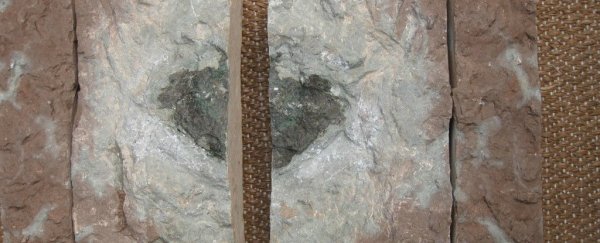Scientists in Sweden say they've uncovered what could be the first 'extinct' meteorite to be found – meaning it's a type of rock that no longer rains down on our planet.
If confirmed, this rare find could tell us more about the collisions that go on in outer space, and about the meteorites that still continue to crash into Earth – even if this particular kind of object seems to be out of commission.
The meteorite was in fact discovered in 2011, but it's taken researchers five years to figure out exactly what it is. It measures roughly 8 centimetres long, and is thought to be about 470 million years old.
The object was discovered in Sweden's Thorsberg quarry, close to the village of Österplana, together with more than 100 L-type chondrites of similar age – the type of meteorites we've been finding over the past few hundred years.
"The single meteorite that we found on the Ordovician seafloor is of a type that we do not know of from today's world," geologist and lead researcher Birger Schmitz from Lund University told Charles Q. Choi at Space.com. "This hints that the types of meteorites that fell on Earth in the ancient past were very different than those falling today."
The meteorite is different in two ways: first it features grains of crystals known as spinels, which aren't the same as those found in all other known meteorites. Second, its ratio of chromium to oxygen isotopes is unlike any meteorites we've previously seen.
"For a long time we called the meteorite 'the mysterious object' because we could not understand what it was," Schmitz told Space.com.
The researchers' hypothesis is that this new meteorite is a fragment from the asteroid that slammed into the parent asteroid of all the L-type chondrites scattered across our planet. If we can find out more about where this mystery meteorite came from, it may give us clues about how life on Earth was evolving nearly 500 million years ago.
 Birger Schmitz
Birger Schmitz
During the Ordovician Period, when this rock dates from, the planet saw major shifts in the diversity of marine animals, and the first coral reefs began to appear. It might be possible to link these shifts back to events in space, thanks to the new discovery.
"We base our view of how the Solar System formed and evolved on the meteorites that fall on Earth today," explained Schmitz. "If these meteorites are not representative of what has been falling on Earth in the past, we have to take that into consideration when reconstructing how the original nebula condensed into solid planets and asteroids."
The findings have been published in Nature Communications.
